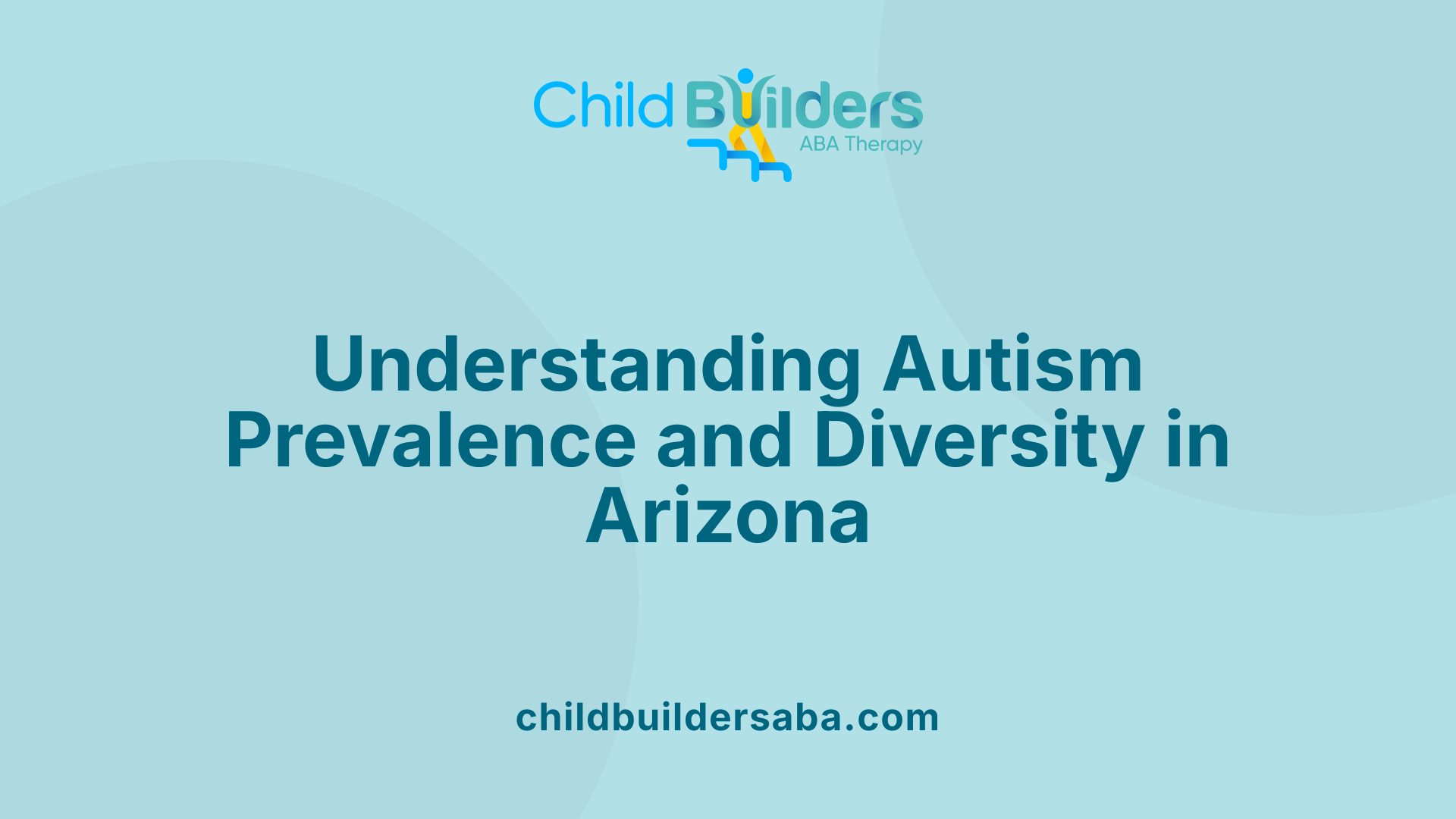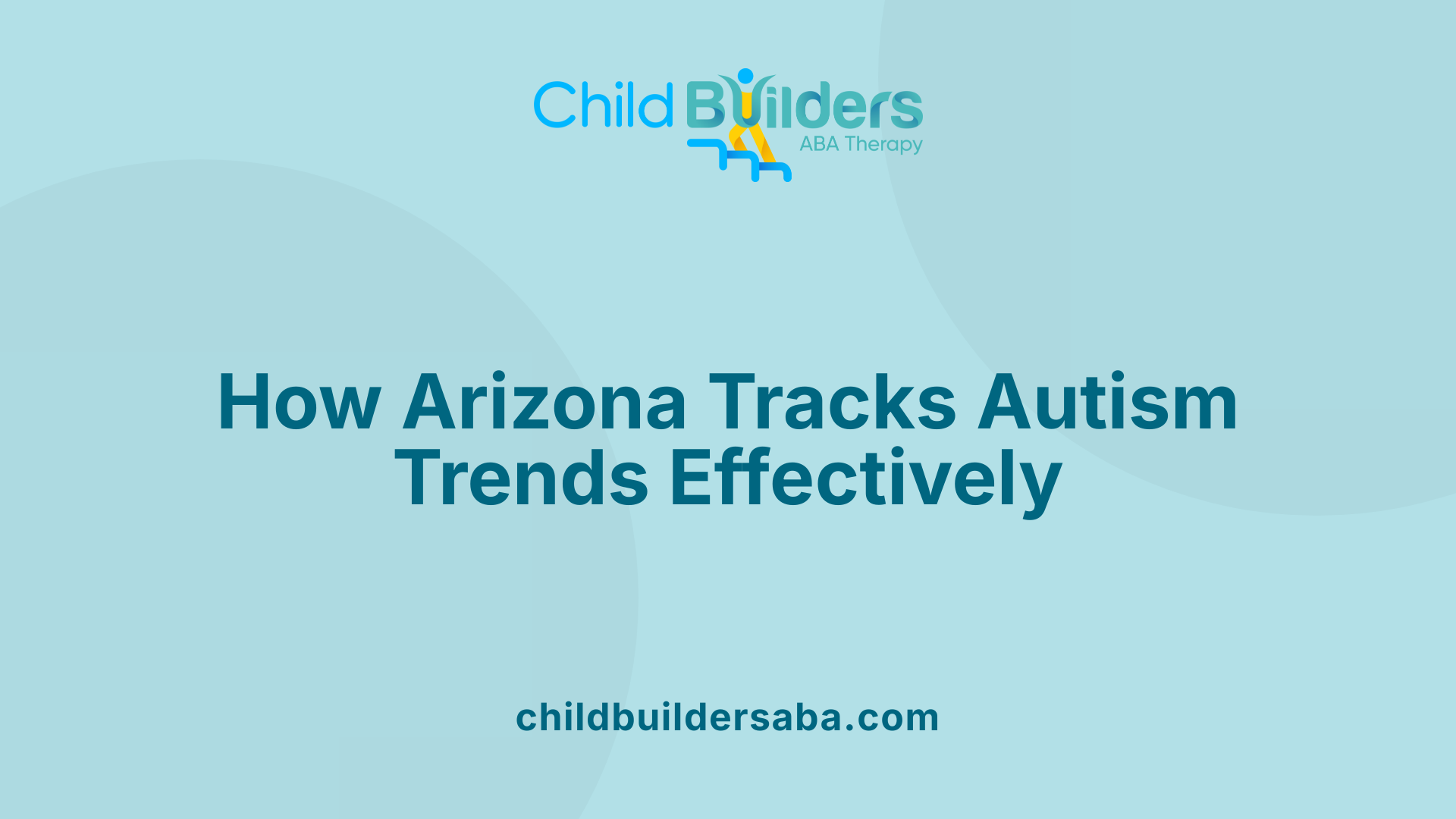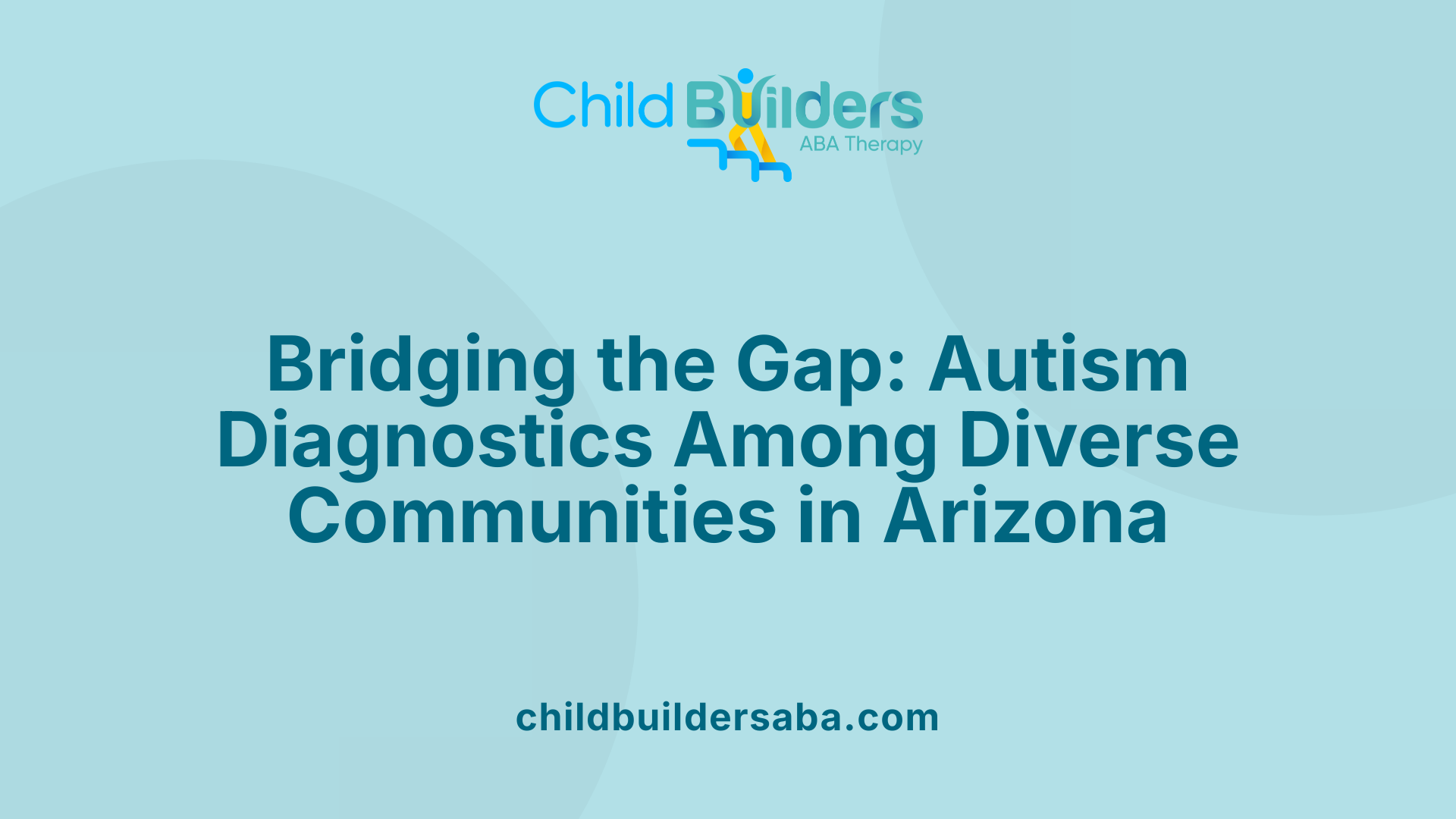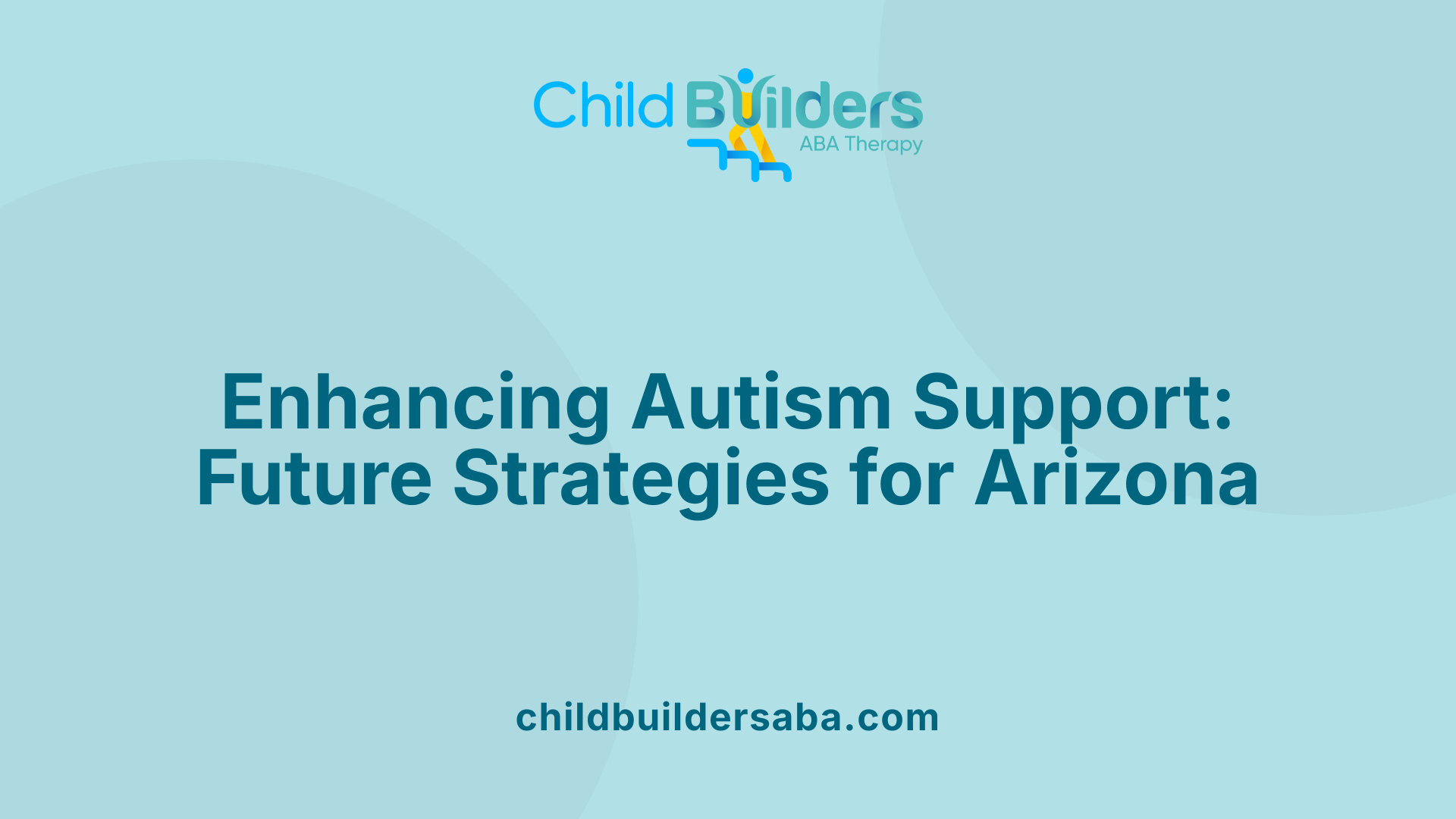Autism Prevalence Increases in Arizona

A Growing Public Health Concern in the State
Autism spectrum disorder (ASD) prevalence in Arizona has seen a notable increase over recent years, mirroring national trends. This rise reflects a complex interplay of factors, including improved awareness, advances in diagnostic methods, environmental influences, and demographic disparities. Understanding these trends and the underlying causes is crucial for informing public health strategies, resource allocation, and early intervention efforts within the state.
Current Autism Prevalence Rates in Arizona

What are the current autism prevalence rates in Arizona?
According to data from the Centers for Disease Control and Prevention (CDC) in 2020, approximately 1 in 36 children in Arizona are diagnosed with autism spectrum disorder (ASD). This rate is slightly higher than the national average for that year, which was about 1 in 36 children across the United States. Autism diagnoses in Arizona affect children from various racial, ethnic, and socioeconomic backgrounds, reflecting the diversity seen across the country.
The increasing prevalence of autism is partly attributed to improved detection and diagnostic practices. Many children in Arizona continue to be diagnosed after age 4, with some diagnoses occurring at 14 to 18 months and most by age 2. This trend underscores the importance of early screening and intervention.
Overall, autism remains the fastest-growing developmental disability in the U.S., with ongoing surveillance and increased awareness playing vital roles in capturing more cases. The rising prevalence signifies a need for expanded resources, support services, and tailored interventions to meet the needs of children and families affected by autism.
Factors Driving the Autism Rate Increase in Arizona
What factors are contributing to the rising autism prevalence in Arizona?
The rising rates of autism spectrum disorder (ASD) in Arizona are driven by multiple interconnected factors. Improvements in screening practices have played a prominent role, with healthcare providers now better equipped to identify early signs of ASD. Additionally, increased public awareness has encouraged more families and educators to seek assessments, leading to earlier diagnoses.
Changes in diagnostic criteria over the years have also expanded what qualifies as autism, allowing more children to be identified. Genetics influence the prevalence as well, with familial risks and gene mutations contributing to actual increases. Environmental influences, such as prenatal exposure to pollutants, maternal health issues, and birth complications, are also under scientific investigation for their role in increasing ASD risk.
Overall, both enhanced detection methods and potential genuine risk factor alterations contribute to the rising autism prevalence in Arizona.
How does improved detection impact reported prevalence?
Enhanced detection tools, greater awareness, and broadening of diagnostic guidelines have made it easier to find and diagnose children with ASD at earlier ages. Consequently, more children are now identified with autism sooner, which inflates reported prevalence rates.
Arizona has seen policies like the Autism Insurance Reform Law and recommendations for screening beginning at 12 months, encouraging proactive and early detection. This proactive approach means cases that previously went unnoticed are now being diagnosed, reflecting an apparent increase in prevalence that may largely be due to these enhanced detection efforts.
In what ways has the COVID-19 pandemic affected autism diagnosis efforts in Arizona?
The COVID-19 pandemic caused temporary setbacks in autism diagnosis efforts across Arizona. Lockdowns and healthcare disruptions limited access to in-person evaluations, reducing the number of assessments performed during peak times.
While telehealth options helped mitigate some barriers, they also posed limitations for comprehensive autism assessments. These disruptions hindered timely diagnosis for some children who might have benefitted from earlier intervention.
Fortunately, ongoing efforts are aiming to recover from these setbacks, with healthcare providers gradually resuming and adapting services to ensure children continue to receive necessary autism evaluations.
| Factor | Impact | Details |
|---|---|---|
| Improved screening | Increased detection | Early screening guidelines and tools lead to earlier identification. |
| Public awareness | More diagnoses | Communities are more informed about ASD symptoms, prompting evaluations. |
| Diagnostic criteria updates | Broader diagnosis | Changes expand what is recognized as autism, raising reported cases. |
| Genetic factors | True risk increases | Genetics play a role in ASD prevalence, with research ongoing. |
| Environmental influences | Potential risk factors | Factors like pollutants and maternal health may contribute to actual prevalence. |
| COVID-19 pandemic | Service disruption | Lockdowns and health system strains delayed assessments but spurred recovery efforts. |
This multifaceted landscape underscores that rising autism rates in Arizona are influenced by both improvements in detection and potential genuine increases in occurrence, emphasizing the importance of continued research and access to diagnostic services.
Methods for Monitoring Autism Prevalence in Arizona
 Arizona utilizes a combination of surveillance programs, initiatives, and collaborations to monitor autism prevalence effectively. The Arizona Developmental Disabilities Surveillance Program (ADDSP) plays a crucial role by tracking ASD rates among 4- and 8-year-olds in Maricopa County. This program gathers data on the number of diagnosed cases, characteristics, and the age at which children receive diagnosis.
Arizona utilizes a combination of surveillance programs, initiatives, and collaborations to monitor autism prevalence effectively. The Arizona Developmental Disabilities Surveillance Program (ADDSP) plays a crucial role by tracking ASD rates among 4- and 8-year-olds in Maricopa County. This program gathers data on the number of diagnosed cases, characteristics, and the age at which children receive diagnosis.
In addition, the state benefits from the Child Find program, part of the Individuals with Disabilities Education Act (IDEA), which focuses on early identification of children from birth to age 21. Child Find helps evaluate and support children showing developmental delays, enabling earlier intervention.
Arizona has also established the statewide Autism Spectrum Disorder (ASD) Advisory Committee. This group offers recommendations to improve services and policies for children with ASD, fostering stakeholder collaboration among healthcare providers, educators, and families.
Public health resources such as the CDC's milestone checklists and early screening programs further support early detection efforts. For instance, routine 1-year well-baby check-ups incorporate autism screening guidelines recommended for early identification.
Data collected through these combined efforts informs public health strategies, aids in resource planning, and enhances support services for children with ASD in Arizona.
| Method | Primary Focus | Additional Details |
|---|---|---|
| ADDSP | Autism prevalence tracking among young children | Conducts county-level surveillance and demographic analysis |
| Child Find | Early diagnosis from birth to age 21 | Supports early intervention and educational placement |
| Stakeholder Collaboration | Policy development and service improvement | Includes health, education, and family advocacy groups |
| CDC milestones and screening | Early detection and referral | Promotes evidence-based screening during routine check-ups |
These approaches collectively allow Arizona to monitor ASD prevalence accurately, support early intervention, and shape policies aimed at addressing the rising numbers of children diagnosed with autism.
Demographic Disparities in Autism Diagnosis Within Arizona

How does autism prevalence differ among demographic groups in Arizona, such as the Hispanic community?
Autism diagnosis rates vary among different racial and ethnic groups in Arizona. Studies show that Hispanic children often have lower reported autism prevalence compared to their white non-Hispanic peers. This disparity mainly stems from underdiagnosis, which can be influenced by several factors. Language barriers, cultural differences, and limited access to healthcare services may prevent early detection.
Research indicates that Hispanic children tend to receive autism diagnoses later in childhood, often after the typical early screening windows. This delay can hinder access to timely interventions, which are critical for better developmental outcomes.
Surveillance data reveal that diagnosis rates among Hispanic children, particularly around age 4, are below the national average. Various barriers—such as lack of culturally appropriate screening tools, limited awareness, and healthcare resource disparities—contribute to these differences.
To address this gap, local efforts are underway. Culturally tailored outreach programs and education initiatives aim to increase awareness about autism in Hispanic communities. These strategies are designed to encourage early screening and diagnosis, helping ensure that Hispanic children in Arizona receive the support they need as early as possible.
| Demographic Group | Reported Autism Prevalence | Typical Age at Diagnosis | Contributing Factors | Intervention Strategies |
|---|---|---|---|---|
| Hispanic Children | Lower than white non-Hispanic | Often later than age 2 | Language, culture, access issues | Outreach programs, culturally sensitive screening |
Efforts continue to focus on reducing these disparities and improving early detection rates for Hispanic children in Arizona, ensuring equitable access to autism services.
Implications and Future Directions for Autism Research and Policy in Arizona

How can early detection and intervention programs be improved?
Early identification of autism spectrum disorder (ASD) is essential for providing effective interventions that support a child's developmental potential. In Arizona, efforts supported by CDC programs emphasize the importance of screening children as early as 12 months, with diagnoses often confirmed between 14 to 18 months or by age 2. To enhance these efforts, expanding access to screening tools in pediatric clinics, training healthcare providers on the latest guidelines, and increasing public awareness about early signs are vital steps.
What strategies are needed to address health disparities among minority groups?
Recent data indicates that autism prevalence is higher among Black, Hispanic, and Asian Pacific Islander children in Arizona compared to white children. Addressing these disparities requires culturally sensitive outreach programs and ensuring equitable access to diagnostic services and intervention resources. Schools, community organizations, and healthcare providers should collaborate to create targeted campaigns that reduce barriers such as language, socioeconomic status, and healthcare availability.
How can we estimate true prevalence versus reported data?
While reported diagnosis rates in Arizona have increased significantly—from 1 in 98 in 2008 to 1 in 59 in 2014, and about 1 in 36 in 2020—they may still underestimate the actual prevalence. Better awareness, improved screening programs, and diagnostic criteria contribute to higher reported rates, but some children remain undiagnosed. Ongoing research and population-based surveys are needed to refine prevalence estimates and understand the full scope of autism in the state.
What public health strategies and stakeholder involvement are necessary?
Addressing the rising autism rates in Arizona requires a coordinated approach involving policymakers, healthcare providers, educators, and families. Public health strategies should focus on expanding early screening programs, increasing funding for autism research, and supporting community-based services. Engaging stakeholders in policy development ensures initiatives are culturally appropriate and effectively meet community needs. With continuous efforts, Arizona can enhance early detection rates, reduce disparities, and improve outcomes for children with autism.
| Focus Area | Current Status | Recommended Actions | Stakeholders Involved |
|---|---|---|---|
| Early detection | Improved screening programs | Expand access and provider training | Healthcare providers, CDC, schools |
| Health disparities | Higher prevalence in minority groups | Culturally tailored outreach | Community organizations, policymakers |
| Data accuracy | Underreporting possible | Conduct population surveys | Researchers, public health agencies |
| Public health policy | Growing awareness | Implement statewide autism initiatives | Government, healthcare, education |
Recent CDC research confirms a rising trend in autism prevalence across the U.S. and Arizona, with increased awareness and better detection contributing to higher reported rates. Future policies should focus on equitable access to early screening, tailored community outreach, and comprehensive data collection to support effective interventions and improve life outcomes for children with ASD.
Charting a Path Forward
The escalating prevalence of autism spectrum disorder in Arizona underscores the importance of continued research, targeted public health initiatives, and equitable access to diagnosis and care. By understanding the multifaceted causes behind these trends and addressing disparities among different demographic groups, Arizona can develop more effective strategies to support individuals with ASD and their families. Strengthening surveillance systems, promoting early detection, and fostering community-based interventions will be vital in managing the rising tide of autism and ensuring better outcomes for all affected populations.
References
- Autism rates rise in U.S., along with awareness in communities of color
- Autism Prevalence Surges in Arizona - Astra ABA
- Autism rates increase in U.S. and AZ - Arizona PBS
- Facts & Statistics - Autism Society of Southern Arizona
- Data and Statistics on Autism Spectrum Disorder - CDC
- Autism rates increase in U.S. and AZ - Arizona PBS
- Evaluating Changes in the Prevalence of the Autism Spectrum ...
- Autism Prevalence Increases in Arizona - ABATherapistJobs.com





































































































